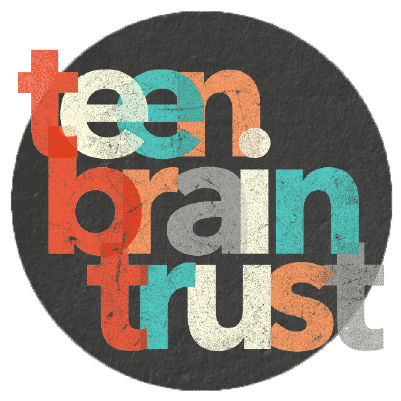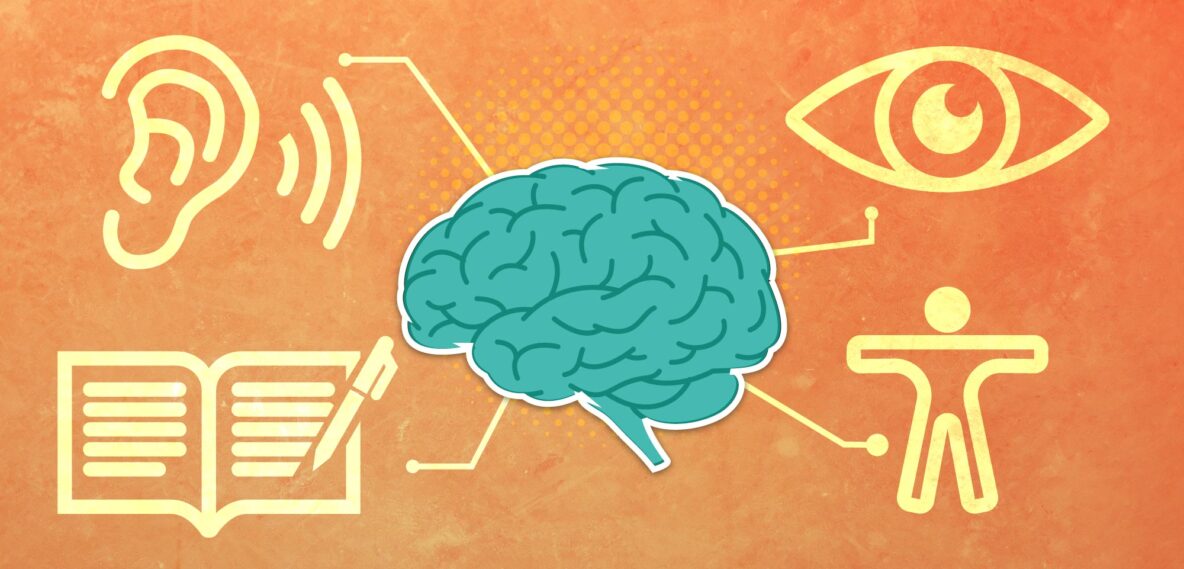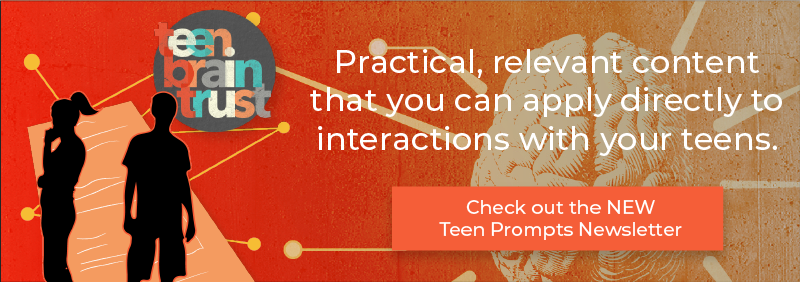How To Recognize and Support Your Teen's Learning Style
When you were in school, did you ever get frustrated that other students in class seemed to have an easy time understanding the material while you struggled to keep up?
It was probably different for you class-to-class. You might have had a terrible time in English but Biology was a breeze, or Art, or something completely different.
As education has progressed and evolved over the last several decades, educators are paying more and more attention to a simple truth: not everyone learns the same way.
While educators are getting better at adapting their curriculums and classrooms to account for different learning styles, it’s still common for some learning styles to be favored more heavily than others. This can lead to unfortunate situations where students believe they’re “not as smart” or “not as capable” as their peers because they struggle in class, when in fact, the class is simply not designed to accommodate the way they learn best.
This is why it’s important for parents to learn about different learning styles.
If you can help your teen identify their learning style, you can also help them better advocate for themselves in the classroom and set themselves up for success in their learning and their approach to assignments.
So, in this article we’ll break down the 4 primary learning styles, how to recognize them, and how best to support each one.
Let’s dive in!
What is your teen’s learning style and how can you figure that out?
The most common model to identify learning styles is the VARK model.
VARK stands for:
- Visual
- Auditory
- Reading/Writing
- Kinesthetic
Of course, determining which VARK ‘bucket’ your teen falls into, doesn’t give you a complete or comprehensive picture of how they learn (most people are likely a mix of all 4 with a dash of other factors thrown in). But, identifying your teens' learning preferences via the VARK model gives you a place to start. More importantly, if you start being introspective about the way your teen learns (and can get them to be introspective about it as well), over time you’ll develop a more comprehensive picture, as will they. Plus, helping your teen to identify their preferred methods of learning gives you, and them, a position to advocate from.
So, with that said, let’s dive into each of the VARK categories and explore what they are, how to identify learners that fall into each bucket, and how best to support each individual learning style.
1. Visual Learners
Visual learners learn best through seeing and/or visualizing information. They are more likely to respond to charts, infographics, and demonstrations than they are to written or spoken instructions, descriptions, or discussions.
Examples of teaching tools that support visual learners are:
- Live demonstrations
- Video demonstrations or ‘how-to videos’
- Information flow-charts
- Infographics
- Using graphs to understand statistics
- Providing written instructions in addition to spoken instructions
- Writing down or illustrating ‘key takeaways’
- Ikea Instructions
- Etc . . .
Here are some cues that may indicate that your teen is a visual learner:
- Saying “Can you show me”
- Saying “I can’t picture it”
- Understanding an idea or concept better after seeing a picture
- Responding well to seeing something demonstrated
- Drawing or doodling while taking notes
- Preferring written over spoken instructions
- An affinity for color-coding
NOTE: In some learning style models visual learners and reading/writing learners are grouped together. Visual learners tend to have an affinity for reading and writing as well.
2. Auditory Learners
Auditory learners learn best when information is presented to them vocally. They will likely take away more from a lecture than a reading assignment. Auditory learners also tend to thrive in class discussions. They tend to better understand information when they have to discuss it to process it. When reading they may benefit from reading aloud to themselves. Students with this learning style may choose not to take notes in class in order to stay focused on listening to what’s being presented.
Examples of teaching tools that support auditory learners are:
- Oral presentations
- Class discussions
- Paired readings
- Group projects
- Collaborative assignments
- Recorded lectures
- Podcasts
- Etc . . .
Here are some cues that may indicate that your teen is a auditory learner:
- Good memory for spoken information
- Likes to talk through ideas out loud
- Strong communication skills
- Good at listening
- Enjoys conversations
- Good at storytelling
- Easily distracted by background noise
- Distracted by silence
- Enjoys collaboration and group projects
3. Reading/Writing Learners
Reading/writing learners show a strong preference and affinity for the written word. Their style is similar to visual learners but focuses much more on the written word than on charts, graphs, or demonstrations. They might struggle to understand a topic when it’s presented in class but get it when they’re able to read about it on their own. Students who fit into this style probably retain spoken information (like lectures) best when taking copious notes. They also tend to excel at projects that require a lot of research.
Examples of teaching tools that support reading/writing learners are:
- Handouts
- PowerPoint Presentations
- Written assignments
- Reading assignments
- Providing short written explanations for charts and graphs
- Detailed written instructions
- Etc . . .
Here are some cues that may indicate that your teen is a reading/writing learner:
- Affinity for note-taking
- Understanding abstract ideas and concepts best through reading about them
- Strong reading/writing skills
- Comfortable with in-depth research
- Good at writing research papers
- Preferring written over spoken instructions
4. Kinesthetic Learners
Kinesthetic or ‘tactile’ learners learn best through doing or experiencing. They tend to be very active and thrive during ‘hands on’ exercises and when physical participation is required. Because of their highly physical and active nature, kinesthetic learners tend to struggle the most in conventional classroom settings. They tend to perform well in science classes with ‘lab’ components as well as hands-on, skill-based training.
Examples of teaching tools that support kinesthetic learners are:
- Pretty much anything where students can be on their feet
- Letting kinesthetic learnings help out in class
- Using props in class
- Using flashcards to make learning more interactive
- Creating physical models
- Having students create diagrams, maps, or collages to sort information
- Simulation exercises
- Role-playing exercises
- Field trips
- Etc . . .
Here are some cues that may indicate that your teen is a kinesthetic learner:
- Has a hard time sitting still
- Enjoys hands-on activities
- Likes to do things rather than read about them (or hear about them)
- Paces while thinking or talking through ideas
- Will stretch or move around while reading
- Enjoys creating physical projects
Helping your teen advocate for themselves and their learning style in school:
While educators are getting better at crafting their classrooms and their curriculum to accommodate all learning styles, there’s always room for improvement.
By helping your teen identify their preferred methods of learning, you can then empower them to advocate for themselves at school.
Here are some examples of how that might look:
- Your teen is an auditory learner in class with a teacher who’s strict about note-taking (they expect all students to be taking notes during a lecture). In this scenario your teen could approach them and make the request to record the lecture for future listening instead of taking notes, which allows them to listen freely during class.
- Your teen is a kinesthetic learner in a class where they’re expected to remain seated the entire time. In this scenario your teen could approach the teacher and request that they allow for periodic 30-second stretch breaks. Alternatively, they could offer to assist with physical classroom tasks when appropriate (wiping down the whiteboard, passing out handouts, etc . . .).
You can also work with your teen to create an at-home plan for doing their homework that best accommodates their learning style.
This is important, especially if you have a student that’s struggling academically. Remember, teens are hungry to explore and exert their independence and individualism.
Engage your teen in finding the solution for how they learn best. If your student is struggling, let them know that you’ll work together to help them better understand the material. This way, they are involved and not passive in their educational experience while feeling encouraged and validated.
The truth of the matter is, all students are capable of learning visually, auditorily, kinesthetically, and through reading and writing.
While your teen will probably lean towards one learning style more than another, their preferred method of learning probably encompasses bits and pieces from all four learning styles.
Also, their preferred method of learning may change over time. When kids are young (and we’re generalizing here) they tend to lean more towards kinesthetic learning. Older students tend to lean more towards reading and writing.
The point here isn’t to have your teen slap a label on themselves and say “this is the type of learner I am forever and always”. But, we can use the learning styles model as a tool to help guide our teens to the techniques that will help them learn best.
Once they know how they learn best they can start to adapt the way they participate in class and the way they manage their schoolwork at home.
Schoolwork is one of the major stressors for teens. By empowering them to learn the way they learn best we can help make their academic life easier, more fulfilling, and more effective.
by Robin Friend Stift - Co-Creator & Lead Course Designer for Teen Brain Trust
Share this Post


